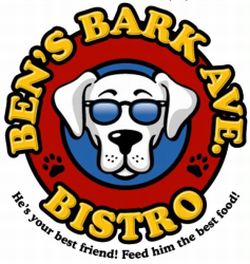
To understand the nutritional needs of dogs and cats, it is useful to begin with a basic understanding of their anatomical features, and how they differ from herbivores and omnivores.
By understanding which anatomical features are associated with each kind of diet, we are able to classify an animal as:
1. CARNIVORE (meat eaters),
2. HERBIVORE (plant-eaters), or
3. OMNIVORE (both meat and plant eaters)
This classification helps understand which foods the animal is actually adapted to eat.
HERBIVORES (cows, sheep)
Herbivores eat plants, not meat. So it’s no surprise that their anatomical features are adapted to process carbohydrates and other nutrients produced by plants. Anatomical features common to herbivores confirm their adaption for a plant-based diet.
1. LONG DIGESTIVE TRACTS up to 10 times their body length are needed due to the relative difficulty with which plant foods are broken down. Herbivores have significantly longer and much more elaborate guts than do carnivores.
2. SQUARE & FLAT MOLARS provide an ideal grinding surface to crush and grind plants (but not meats). A lower jaw with a pronounced sideways motion facilitates the grinding motion needed to chew plants.
3. CARBOHYDRATE-DIGESTING ENZYMES IN SALIVA. AMYLASE is a digestive enzyme in saliva that helps in digesting carbohydrates. Herbivores methodically chew their food to ensure the thorough mixing with amylase.
OMNIVORES (pigs, bears, humans)
Omnivores (from Latin: omne all, everything; vorare to devour) are evolved to eat both plants
and animals. As general feeders, omnivores are not specifically adapted to eat meat or plant material exclusively. Anatomical features common to omnivores include:
1. MEDIUM LENGTH DIGESTIVE TRACTS that provide the flexibility to digest both vegetation and animal proteins.
2. FLAT MOLARS AND SHARP TEETH developed for some grinding and some tearing.
3. SALIVA CONTAINS CARBOHYDRATEDIGESTING ENZYME AMYLASE which is responsible for the majority of starch digestion.
CARNIVORES (wolves, dogs, cats)
Carnivore means 'meat eater' (Latin carne meaning 'flesh' and vorare meaning 'to devour') and classifies animals whose diets consist mainly of meat – such as dogs and cats.
The anatomical features of carnivores are:
1. SHORT, SIMPLE & ACIDIC DIGESTIVE TRACTS. Protein and fat from animal source are quickly and easily digested – hence the short digestive system of dogs and cats. The ability of dogs and cats to secrete hydrochloric acid is also exceptional. To facilitate protein breakdown and kill the bacteria found in decaying meats, dogs and cats are able to keep their gastric pH around 1-2.
2. SHARP TEETH (designed for slicing meat, not grinding plants). Carnivores have elongated teeth designed for tearing and killing prey. Their molars are triangular with jagged edges that function like serrated-edged blades that give a smooth cutting motion like the blades on a pair of shears.
3. JAWS MOVE VERTICALLY unlike herbivores and omnivores that grind their food by side to side chewing, the jaws of dogs and cats operate vertically to provide a smooth cutting motion, and open widely to swallow large chunks of meat.
4. NO AMYLASE IN SALIVA. Amylase in saliva is something omnivorous and herbivorous animals possess, but not carnivorous animals like dogs or cats. As amylase is not present in saliva, the burden is entirely on the pancreas to produce the amylase needed to digest carbohydrates. Feeding dogs as though they were omnivores or herbivores makes the pancreas work harder in order to digest the carbohydrate-filled foods (instead of just producing normal amounts of the enzymes needed to digest proteins and fats)
CONCLUSIONS | CATS & DOGS ARE DESIGNED FOR AN ALMOST EXCLUSIVELY MEAT-BASED DIET
Several key anatomical features separate dogs and cats from omnivores and herbivores, while clearly classifying them as carnivores with an adaptation for an almost exclusively meat based diet.
STOMACH TYPE & LENGTH
• Dogs & cats posses a short, simple gastro-intestinal tract. Because meat is easily digested (relative to plants) their small intestines are short.
A high concentration of stomach acid helps quickly break down proteins(Carnivores have a stomach acidity of about pH 1 - compared to humans at pH 4 to 5).
TEETH & JAWS
• A large mouth opening with a single hinge joint adapted for swallowing whole chunks of meat.
• Short and pointed teeth designed for grasping, ripping and shredding meat(not grinding grains).
• Teeth and jaws designed to swallow food whole(not for chewing or crushing plants).
DIGESTIVE ENZYMES
• Adapted to break down protein and fat from meat (not plants or grains), the saliva of dogs and cats does not contain the digestive enzyme amylase.
• Carnivores don’t chew their food. Unlike carbohydrate-digesting enzymes,protein-digesting enzymes cannot be released in the mouth due to the potential of damaging the oral cavity (auto digestion).
• Therefore, carnivores do not mix their food with saliva—they simply bite off huge chunks of meat and swallow them whole.


